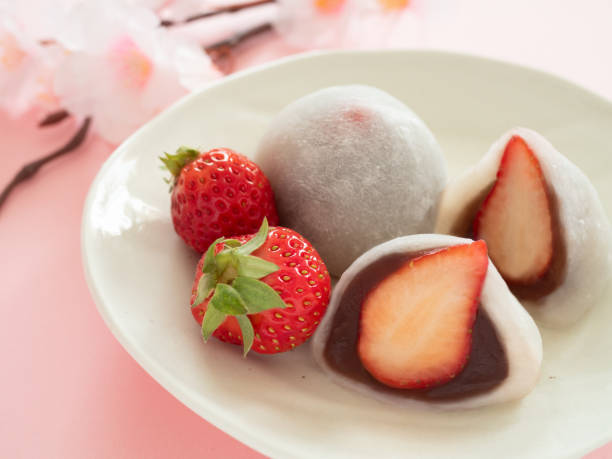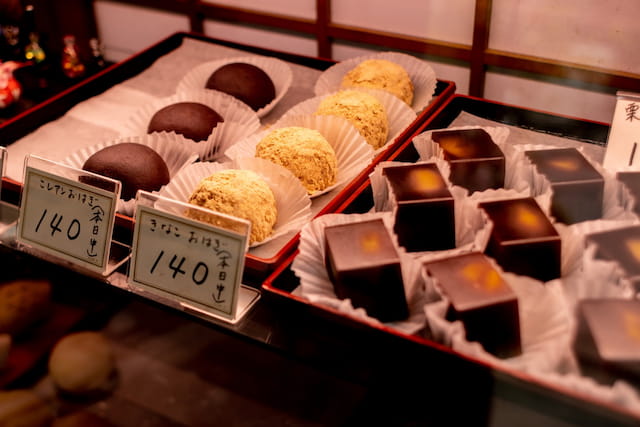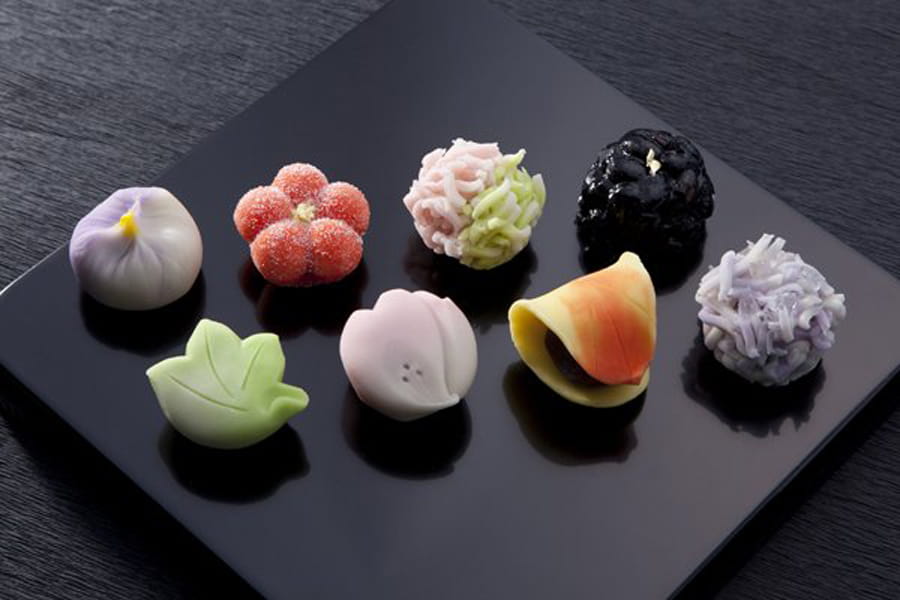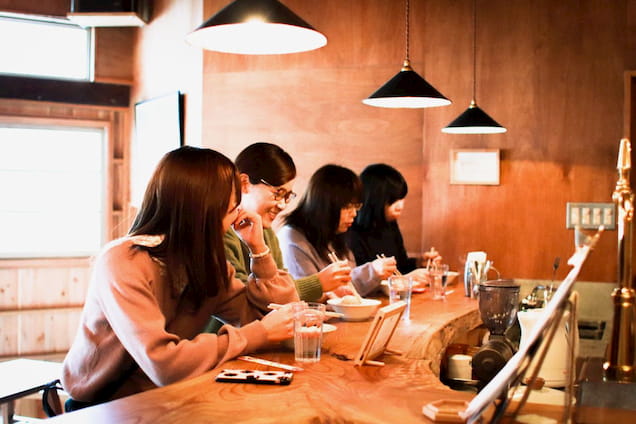Mochi is one of the few lucky Japanese sweets that is known in the West. Although we love sushi, ramen and yakisoba, the truth is that Japanese pastries are still largely unknown in the western part of the world. However, mochi has managed to arouse great curiosity among Japanese food lovers. Today we present daifuku, a Japanese sweet descendant of the popular mochi that has delighted the palate of the sweet-toothed in the land of the rising sun for hundreds of years.
What is daifuku
Daifuku is a type of wagashi, i.e. a traditional Japanese dessert. This sweet consists of a round mochi that is filled with an ingredient. There are many types of daifuku, as they can be filled with anything, but the original daifuku was filled with anko, the sweet azuki bean paste. Like other wagashi, daifuku was and is often served as an accompaniment to tea.
Originally, daifuku was called “harabuto mochi”. However, the pronunciation “fuku” in Japanese can mean both “belly” and “luck”. Therefore, to avoid confusion, the name of this pastry was changed to “daifukumochi”, which means “good luck mochi”.
Daifuku as we know it became popular during the Edo period (1603-1868). Although the preparation of daifuku looks quite simple, it actually requires a lot of effort. The glutinous rice paste was prepared by hand by pounding the rice with water in a mortar and pestle to form a sticky dough, which was then placed in a mould to form the mochi shape. This process is known as mochitsuki.
And when is this snack usually eaten? Originally, daifuku was only eaten on special occasions, such as New Year’s Day. Nowadays, however, they can be eaten every day of the year as they are easily found in Japanese restaurants, bars and supermarkets. Moreover, Japan is not the only country where you can find daifuku, in Korea you can also find a sweet similar to daifuku called chapssaltteok.
Differences between daifuku, dango and mochi
Although daifuku, dango and mochi are three sweets with a similar base, it is important not to confuse them, as there are some significant differences between them.
Mochi is a japanese cake made from glutinous rice that is pounded into a sticky ball. However, this sweet is not filled with any ingredients or additives that add sweetness.
Dango is also a Japanese ball-shaped cake, however, it is made from rice flour. In addition, the balls are usually smaller than mochi and are usually presented 3 or 4 together on a wooden stick. They are usually served with a sauce on top.
Daifuku can be a little more difficult to differentiate between dango and mochi. Although it also comes in a multitude of colours like the desserts described above, the main difference is that it is filled. The daifuku is literally a stuffed mochi. As mentioned above, the most common filling is anko, but it can be filled with other ingredients, such as fruits or creams.
Varieties of daifuku
The varieties of daifuku result from combinations between the taste of the mochi and the filling they incorporate. Here is a list of the most common examples:
Ichigo Daifuku: this is one of the most popular varieties and is characterised by the incorporation of a whole strawberry inside the mochi. In addition to the strawberry, it is also filled with anko.
Yomogi Daifuku: This type of daifuku is characterised by the incorporation of the Japanese herb mugwort during preparation. Because of the mugwort, the mochi is dyed bright green, a very nice shade to present during spring.
Daifuku Aisu: This is one of the most popular types of daifuku in Western countries, having been invented in Little Tokyo in Los Angeles in 1990. It is a daifuku filled with ice cream, which, although similar to mochi ice cream, is not quite the same thing. While mochi ice cream is eaten very cold, ice cream-filled daifuku is eaten at room temperature.





